-
 Bitcoin
Bitcoin $84,887.3634
0.89% -
 Ethereum
Ethereum $1,582.1908
-0.09% -
 Tether USDt
Tether USDt $0.9999
0.00% -
 XRP
XRP $2.0477
-1.33% -
 BNB
BNB $588.7789
0.94% -
 Solana
Solana $134.1673
2.10% -
 USDC
USDC $0.9999
0.00% -
 TRON
TRON $0.2472
1.11% -
 Dogecoin
Dogecoin $0.1540
-0.58% -
 Cardano
Cardano $0.6127
0.36% -
 UNUS SED LEO
UNUS SED LEO $9.0763
-3.57% -
 Chainlink
Chainlink $12.4226
0.14% -
 Avalanche
Avalanche $18.9412
0.76% -
 Toncoin
Toncoin $2.9300
0.15% -
 Stellar
Stellar $0.2384
1.28% -
 Shiba Inu
Shiba Inu $0.0...01168
-1.32% -
 Hedera
Hedera $0.1622
3.11% -
 Sui
Sui $2.1052
2.46% -
 Bitcoin Cash
Bitcoin Cash $331.5035
2.92% -
 Polkadot
Polkadot $3.6167
1.67% -
 Litecoin
Litecoin $74.7011
0.33% -
 Hyperliquid
Hyperliquid $16.8696
5.76% -
 Dai
Dai $0.9999
-0.01% -
 Bitget Token
Bitget Token $4.3571
1.00% -
 Ethena USDe
Ethena USDe $0.9990
-0.02% -
 Pi
Pi $0.6177
1.04% -
 Monero
Monero $216.3407
-0.94% -
 Uniswap
Uniswap $5.1350
-0.76% -
 OKB
OKB $50.2888
-2.65% -
 Pepe
Pepe $0.0...07170
1.00%
Will USDT be hacked?
USDT, while not directly hacked, faces security risks through exchanges and smart contract vulnerabilities; Tether implements audits and multi-signature wallets for protection.
Apr 09, 2025 at 07:00 pm
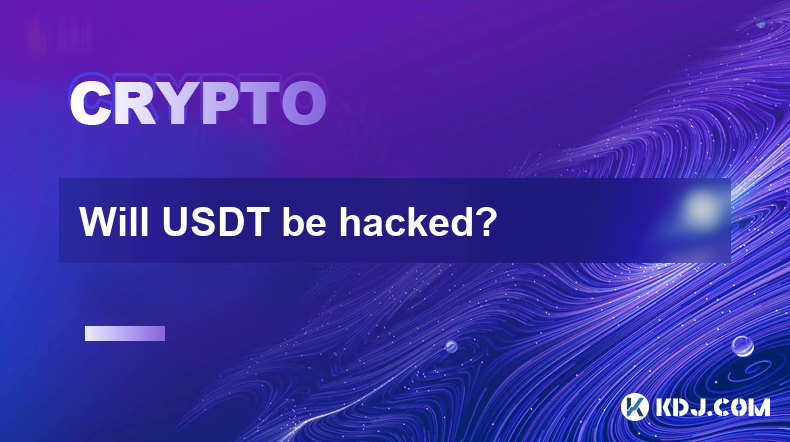
The question of whether USDT, the popular stablecoin, can be hacked is a significant concern for many in the cryptocurrency community. USDT, also known as Tether, is designed to maintain a stable value by being pegged to the US dollar. However, like any digital asset, it is not immune to potential security threats. This article will explore the various aspects of USDT's security, including its underlying technology, past incidents, and the measures in place to protect it from hacks.
Understanding USDT's Technology
USDT operates on multiple blockchains, including Bitcoin's Omni Layer, Ethereum, and Tron. Each of these platforms has its own set of security protocols and potential vulnerabilities. The Omni Layer, for instance, uses the Bitcoin blockchain, which is known for its robust security due to its decentralized nature and high hash rate. Ethereum and Tron, on the other hand, use smart contracts, which can be more susceptible to hacks if not properly audited.
- Bitcoin's Omni Layer: Utilizes the security of the Bitcoin network, making it highly resistant to 51% attacks.
- Ethereum: Employs smart contracts, which require thorough auditing to prevent vulnerabilities.
- Tron: Also uses smart contracts, with a focus on high transaction throughput but similar security concerns as Ethereum.
Past Incidents and Security Breaches
While USDT itself has not been directly hacked, there have been incidents involving exchanges and wallets that hold USDT. For example, in 2017, the Bitfinex exchange, which is closely associated with Tether, was hacked, resulting in the theft of millions of dollars worth of cryptocurrencies, including USDT. This incident highlighted the importance of securing the platforms that handle USDT rather than the stablecoin itself.
- Bitfinex Hack (2017): Hackers stole around 120,000 BTC, which indirectly affected USDT holders.
- Other Exchange Hacks: Various exchanges have been compromised, leading to the loss of USDT held on those platforms.
Measures to Protect USDT
Tether Limited, the company behind USDT, has implemented several measures to enhance the security of the stablecoin. These include regular audits, collaboration with security firms, and the use of multi-signature wallets. Additionally, Tether has a reserve system that is supposed to back each USDT with an equivalent amount of USD, which adds another layer of security.
- Regular Audits: Tether undergoes periodic audits to ensure the integrity of its reserves.
- Security Partnerships: Collaborations with cybersecurity firms to identify and mitigate potential threats.
- Multi-signature Wallets: Requiring multiple signatures for transactions to prevent unauthorized access.
Potential Vulnerabilities
Despite these measures, there are still potential vulnerabilities that could be exploited. Smart contract bugs, for instance, have been a common point of failure in the cryptocurrency space. If a vulnerability is found in the smart contracts used by USDT on Ethereum or Tron, it could potentially be exploited to manipulate the stablecoin's supply or value.
- Smart Contract Bugs: Errors in the code that could be exploited by hackers.
- Phishing Attacks: Scammers tricking users into revealing their private keys or other sensitive information.
- 51% Attacks: Although less likely on major blockchains, a successful attack could disrupt the network's operations.
The Role of User Responsibility
While Tether and the platforms that support USDT have a significant role in ensuring security, users also have a responsibility to protect their assets. This includes using secure wallets, enabling two-factor authentication, and being cautious of phishing attempts. Educating users about these best practices can help reduce the risk of hacks.
- Secure Wallets: Using hardware wallets or reputable software wallets to store USDT.
- Two-Factor Authentication: Adding an extra layer of security to prevent unauthorized access.
- Phishing Awareness: Being vigilant against emails or websites that attempt to steal personal information.
The Future of USDT Security
As the cryptocurrency space continues to evolve, so too will the security measures surrounding USDT. Tether Limited is likely to continue investing in security technologies and practices to protect its users. Additionally, advancements in blockchain technology, such as the development of more secure smart contract platforms, could further enhance the safety of USDT.
- Ongoing Security Investments: Tether's commitment to improving its security infrastructure.
- Blockchain Advancements: New technologies that could make smart contracts and other blockchain components more secure.
- Regulatory Compliance: Adhering to regulations that may impose additional security requirements.
Common Questions Related to USDT and Hacks
Q: Has USDT ever been directly hacked?
A: No, USDT itself has not been directly hacked. However, exchanges and wallets holding USDT have been compromised in the past, leading to the loss of the stablecoin.
Q: What can users do to protect their USDT from hacks?
A: Users can protect their USDT by using secure wallets, enabling two-factor authentication, and being cautious of phishing attempts. Educating oneself about security best practices is crucial.
Q: What measures does Tether Limited take to secure USDT?
A: Tether Limited employs regular audits, collaborates with security firms, and uses multi-signature wallets to enhance the security of USDT. They also maintain a reserve system to back each USDT with an equivalent amount of USD.
Q: Are there any potential vulnerabilities in USDT's technology?
A: Yes, potential vulnerabilities include smart contract bugs, phishing attacks, and, although less likely, 51% attacks on the blockchains that support USDT.
Q: How might future advancements in blockchain technology affect USDT's security?
A: Future advancements could lead to more secure smart contract platforms and other blockchain technologies, potentially enhancing the safety of USDT. Tether Limited's ongoing investment in security will also play a role in improving USDT's security.
Disclaimer:info@kdj.com
The information provided is not trading advice. kdj.com does not assume any responsibility for any investments made based on the information provided in this article. Cryptocurrencies are highly volatile and it is highly recommended that you invest with caution after thorough research!
If you believe that the content used on this website infringes your copyright, please contact us immediately (info@kdj.com) and we will delete it promptly.
- Prologis Inc. (NYSE: PLD) Kicks Off 2025 with Encouraging Q1 Results
- 2025-04-18 08:35:13
- Crypto’s university grooming rumors echo China’s ‘naked loan’ scandal
- 2025-04-18 08:35:13
- Exploring the OM Crash
- 2025-04-18 08:30:12
- Retail and Short-Term Holders Are Dumping Bitcoin, Whales Are Quiet
- 2025-04-18 08:30:12
- BetMGM CUSE150 Bonus Code: Get a $150 Free Bet When You Bet $10
- 2025-04-18 08:25:12
- Render (RNDR) Is Poised for Breakout Toward $6.70
- 2025-04-18 08:25:12
Related knowledge
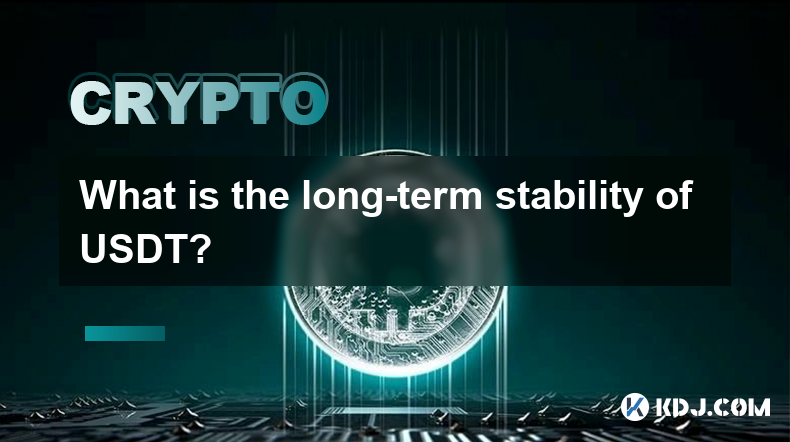
What is the long-term stability of USDT?
Apr 04,2025 at 10:28pm
The long-term stability of USDT, also known as Tether, is a topic of significant interest within the cryptocurrency community. USDT is a type of stablecoin, designed to maintain a stable value by being pegged to a reserve asset, typically the US dollar. The stability of USDT is crucial for its widespread use in trading, as a hedge against volatility, an...
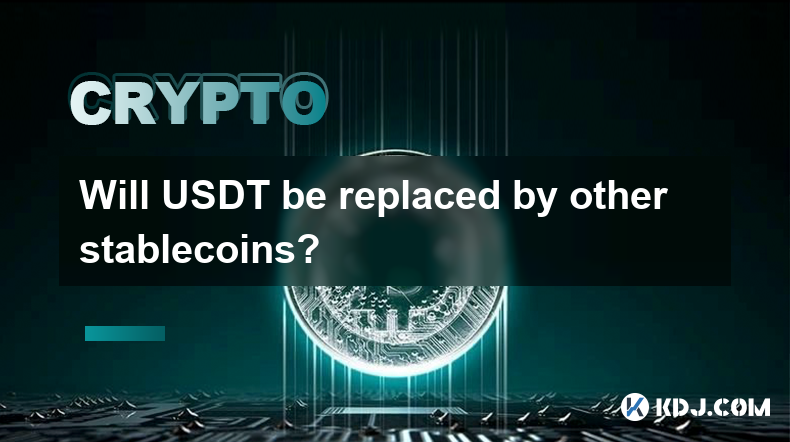
Will USDT be replaced by other stablecoins?
Apr 08,2025 at 06:28pm
The cryptocurrency market has seen a significant rise in the use of stablecoins, with Tether (USDT) being one of the most popular. However, the question of whether USDT will be replaced by other stablecoins is a topic of much debate within the crypto community. To understand this, we need to delve into the factors that could influence the dominance of U...
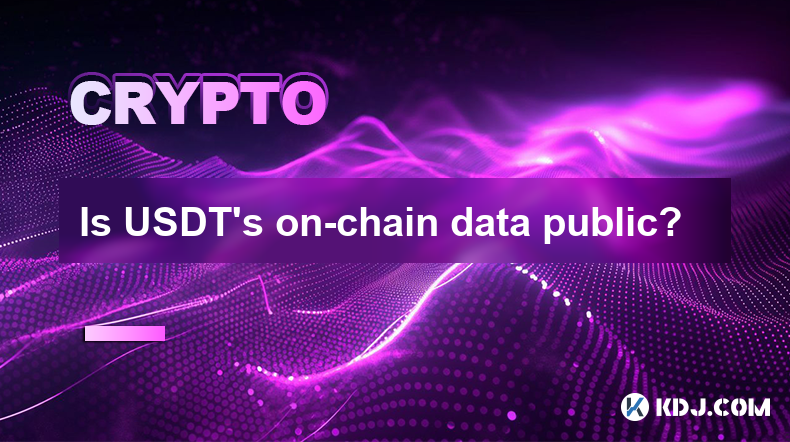
Is USDT's on-chain data public?
Apr 05,2025 at 08:49am
The transparency of USDT's on-chain data is a topic of significant interest within the cryptocurrency community. Tether, the company behind USDT, claims that its operations are transparent and that the on-chain data is publicly accessible. However, understanding the nuances of this data and how to access it can be challenging. This article will delve in...
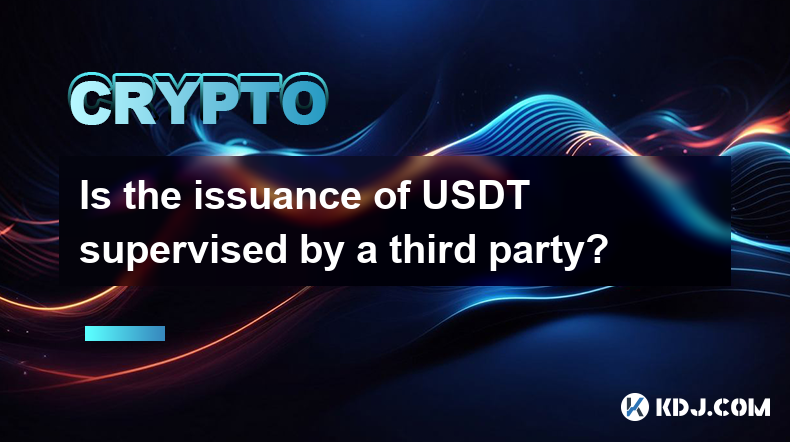
Is the issuance of USDT supervised by a third party?
Apr 06,2025 at 01:49pm
The issuance of USDT, also known as Tether, is a topic that often sparks curiosity and debate within the cryptocurrency community. Many wonder whether this stablecoin, which is pegged to the US dollar, is supervised by a third-party to ensure transparency and accountability. In this article, we will delve into the details of USDT's issuance process and ...
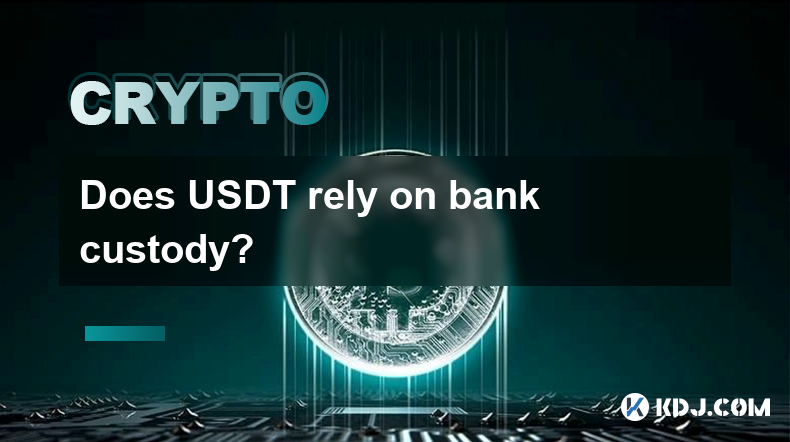
Does USDT rely on bank custody?
Apr 06,2025 at 03:00pm
Tether (USDT) is a widely used stablecoin in the cryptocurrency market, designed to maintain a stable value by pegging it to the US dollar. One of the critical aspects of understanding USDT is its reliance on bank custody. This article will delve into the mechanisms behind USDT's operations, specifically focusing on the role of bank custody in its ecos...
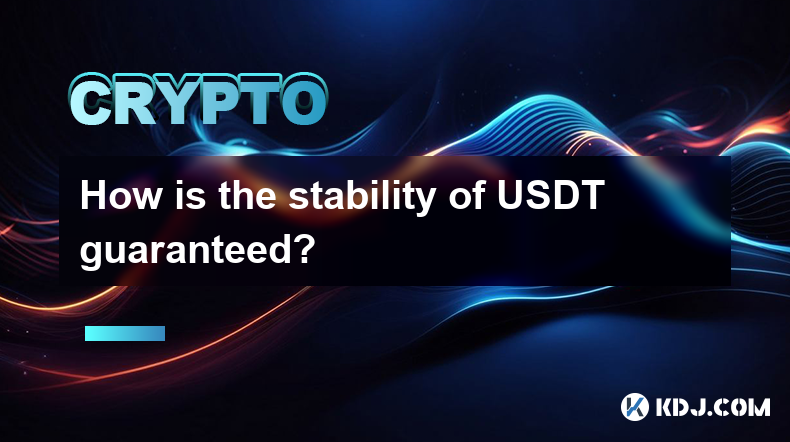
How is the stability of USDT guaranteed?
Apr 03,2025 at 06:00am
The stability of USDT, also known as Tether, is a critical aspect that underpins its role as a stablecoin in the cryptocurrency market. USDT is designed to maintain a 1:1 peg with the US dollar, which is achieved through a combination of mechanisms and practices. Understanding these elements is essential for anyone interested in the stability and reliab...

What is the long-term stability of USDT?
Apr 04,2025 at 10:28pm
The long-term stability of USDT, also known as Tether, is a topic of significant interest within the cryptocurrency community. USDT is a type of stablecoin, designed to maintain a stable value by being pegged to a reserve asset, typically the US dollar. The stability of USDT is crucial for its widespread use in trading, as a hedge against volatility, an...

Will USDT be replaced by other stablecoins?
Apr 08,2025 at 06:28pm
The cryptocurrency market has seen a significant rise in the use of stablecoins, with Tether (USDT) being one of the most popular. However, the question of whether USDT will be replaced by other stablecoins is a topic of much debate within the crypto community. To understand this, we need to delve into the factors that could influence the dominance of U...

Is USDT's on-chain data public?
Apr 05,2025 at 08:49am
The transparency of USDT's on-chain data is a topic of significant interest within the cryptocurrency community. Tether, the company behind USDT, claims that its operations are transparent and that the on-chain data is publicly accessible. However, understanding the nuances of this data and how to access it can be challenging. This article will delve in...

Is the issuance of USDT supervised by a third party?
Apr 06,2025 at 01:49pm
The issuance of USDT, also known as Tether, is a topic that often sparks curiosity and debate within the cryptocurrency community. Many wonder whether this stablecoin, which is pegged to the US dollar, is supervised by a third-party to ensure transparency and accountability. In this article, we will delve into the details of USDT's issuance process and ...

Does USDT rely on bank custody?
Apr 06,2025 at 03:00pm
Tether (USDT) is a widely used stablecoin in the cryptocurrency market, designed to maintain a stable value by pegging it to the US dollar. One of the critical aspects of understanding USDT is its reliance on bank custody. This article will delve into the mechanisms behind USDT's operations, specifically focusing on the role of bank custody in its ecos...

How is the stability of USDT guaranteed?
Apr 03,2025 at 06:00am
The stability of USDT, also known as Tether, is a critical aspect that underpins its role as a stablecoin in the cryptocurrency market. USDT is designed to maintain a 1:1 peg with the US dollar, which is achieved through a combination of mechanisms and practices. Understanding these elements is essential for anyone interested in the stability and reliab...
See all articles
























































































